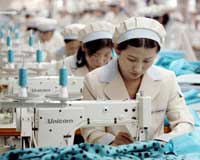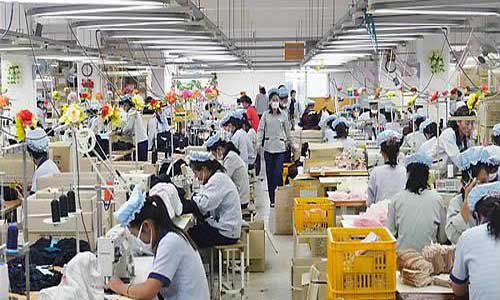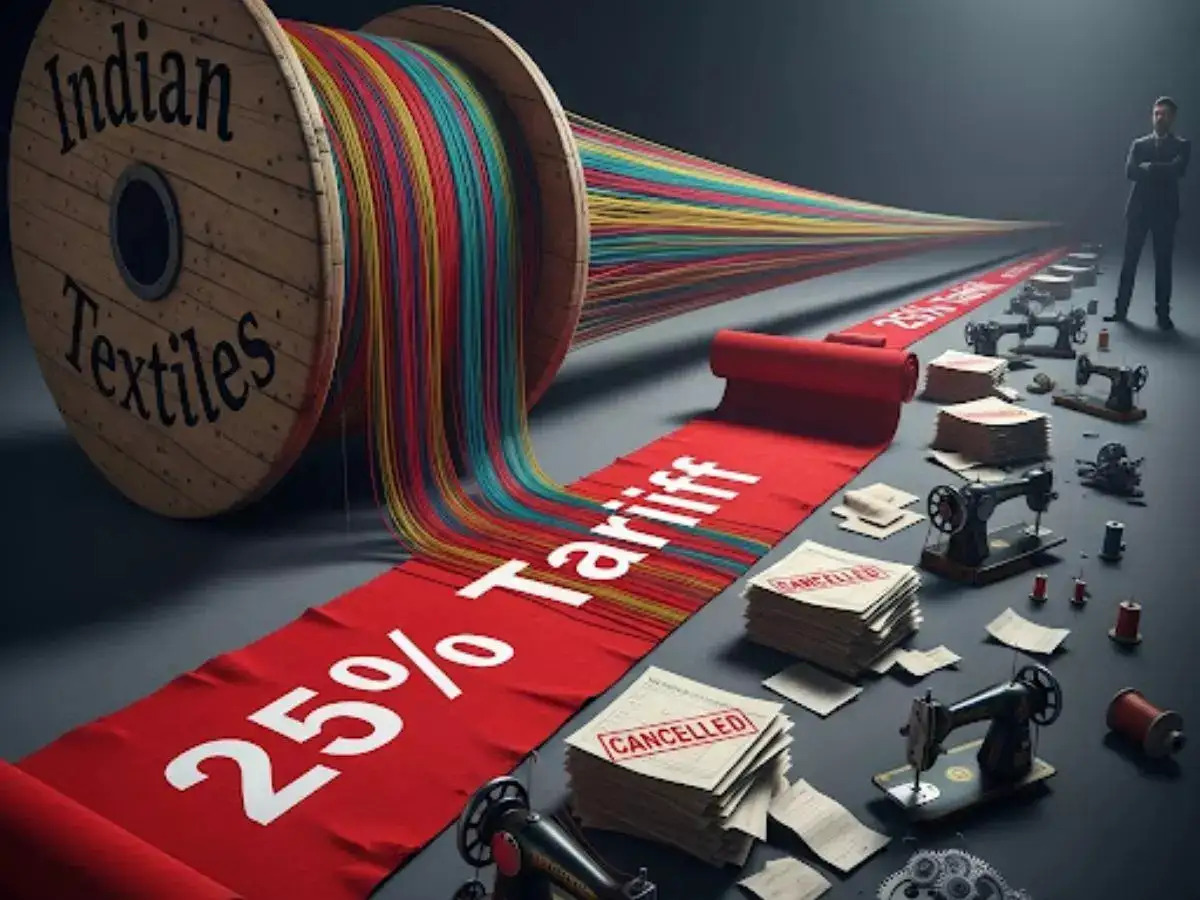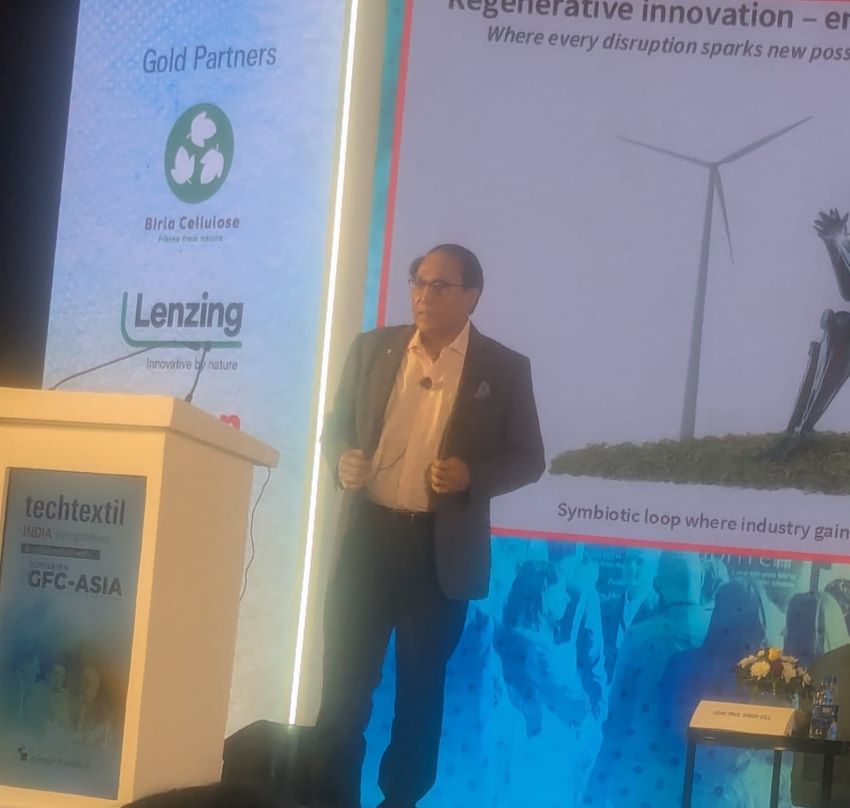FW
Australia’s shorn wool production for the 2017-18 season is estimated at 340 million kilograms greasy.
After the excellent seasonal conditions experienced across Australia for some or all of 2016-17, conditions have become more mixed. Seasonal conditions in some regions, including much of Victoria and the south-east of South Australia, are reported to be very good, but other areas, including parts of Western Australia, the Western Division of New South Wales and key wool growing regions in Queensland, have been dry.
While fleece weights in spring are likely to be good, there is likely to be a moderation in the average wool cuts per head in some areas as the season progresses. Overall, the season average wool cut per head is expected to slide by 1.2 per cent. This contrasts with the 3.4 per cent increase in average cut per head estimated for 2016-17.
There was a fall in the volume of 26 to 28 micron wool but an increase in 30.6 and broader wool. As a result of these changes, the mean fiber diameter for Australia in 2016-17 was steady at 21.0 microns, the same as in 2015-16.
The easing in average wool cut per head is likely to be almost entirely offset by a one per cent increase in the number of sheep shorn during the 2017-18 season.
Digital Textile Symposium, CNT (formerly known as Inkjet Forum India) will be held in Mumbai, November 16, 2017. The conference, currently in its seventh year, will delve deeper on the opportunities and market growth enabled by new high speed and high performance digital textile systems and consumables.
The focus will be on creating business opportunities for various stakeholders of the digital textile printing industry and charting out a sustainable growth part for this technology in India.
Digital Textile Symposium will cover multiple topics pertaining to the industry. These include high speed digital fabric printing solutions, digital fabric printing for increasing profits, pigment inkjet technology for textiles, software solutions enabling digital textile printing, latest technologies for textile sublimation printing, emergence of new business models driving digital textile printing, solutions for durable printing of home textile and direct disperse inkjet printing onto synthetic fabrics.
This exhibition should be of particular interest to ink manufacturers, OEMs, fashion designers, service providers, processing houses, textile mills, brands, print service providers, garment manufacturers, home textile manufacturers, fabric manufacturers, digital textile printers, apparel manufacturers, fabric printers, screen printers, investors and entrepreneurs, and technologists.
Concurrent to the symposium, and in Mumbai, an exhibition on textile processing will be held, November 17 to 18. This is dedicated to innovations in textile processing across various application sectors.
AEPC feels the minimum wage proposals for the garment industry are unrealistic. The plan is to fix the minimum wage at Rs 18,000 (US$280) a month.
AEPC says this will make garment manufacturing nonviable and unsustainable. This high minimum wage would not only adversely affect exports but also lead to a fall in employment generation in the sector.
The confusion over the issue of minimum wages, says AEPC, has impacted the booking of export orders and to restore the confidence of foreign buyers it’s necessary to clarify matters.
The cost of wages in India’s garment export sector is around 30 per cent of FOB. Around 70 per cent of the workforce in the readymade garment industry comprises women while other industries have a participation of women between three per cent and seven per cent.
India’s garment exports during July 2017 fell 11.86 per cent in dollar terms as against July 2016 and the growth trajectory of 31.72 per cent achieved during April 2017 has now been limited to 5.94 per cent in the period April to July 2017.
Incorporated in 1978, the Apparel Export Promotion Council is the official body of apparel exporters in India. It provides assistance to Indian exporters as well as importers and international buyers who choose India as their preferred sourcing destination for garments.
"North Korean apparel factories have been attracting Chinese textile firms owing to low labour cost. Interestingly, the tag says, ‘Made in China’ for the clothes produced in North Korea. Chinese suppliers send fabrics and other raw materials required for manufacturing clothing to North Korean factories across the border where garments are assembled and exported. Manufacturers can save up to 75 per cent by making clothes in North Korea. While they receive orders from all over the world but owing to the sensitivity of UN Sanctions, they need to route through clothing agents to hide their identity."

North Korean apparel factories have been attracting Chinese textile firms owing to low labour cost. Interestingly, the tag says, ‘Made in China’ for the clothes produced in North Korea. Chinese suppliers send fabrics and other raw materials required for manufacturing clothing to North Korean factories across the border where garments are assembled and exported. Manufacturers can save up to 75 per cent by making clothes in North Korea. While they receive orders from all over the world but owing to the sensitivity of UN Sanctions, they need to route through clothing agents to hide their identity. Dozens of clothing agents operate in Dandong, acting as go-betweens for Chinese clothing suppliers and buyers from the United States, Europe, Japan, South Korea, Canada and Russia.

Statistics from Korea Trade-Investment Promotion Agency (KOTRA) show, textiles have been North Korea’s second-biggest export after coal and other minerals in 2016, totaling $752 million. Total exports from North Korea in 2016 rose 4.6 percent to $2.82 billion. Chinese exports to North Korea grew almost 30 per cent to $1.67 billion in the first half of the year, largely driven by textile materials and other traditional labor-intensive goods not included on the United Nations embargo list.
A growing business proposition
North Korea has about 15 large garment exporting enterprises, each operating several factories spread around the country, and dozens of medium sized companies, according to Netherlands’ GPI Consultancy, which helps foreign companies do business in North Korea. Some North Korean factories are located in Siniuju city just across the border from Dandong. Other factories are located outside Pyongyang. Finished clothing is often directly shipped from North Korea to Chinese ports before being sent onto the rest of the world, as informed by some of the Chinese traders.
All factories in North Korea are state-owned and textile units are overbooked with work. North Korean workers can produce 30 per cent more clothes each day than a Chinese worker, say Korean-Chinese businessman. North Koreans don’t work for money; they believe they are working for their country, for their leader. Their daily wages are significantly lower than many other Asian countries. North Korean workers at the now closed Kaesong industrial zone just across the border from South Korea received wages ranging from a minimum of around $75 a month to an average of around $160, compared to average factory wages of $450-$750 a month in China.
UN Sanctions
The new UN sanctions imposed on North Korea recently ban countries from increasing the current numbers of North Korean laborers working abroad. China does not disclose official figures for the number of North Koreans working in factories and restaurants in China, although numbers are down from peak period two to three years ago, according to Cheng Xiaohe, a North Korea specialist at Beijing's Renmin University. North Korean factory workers in China earn about 2,000 yuan ($300.25), about half of the average for Chinese workers. They are allowed to keep around a third of their wages, with the rest going to their North Korean government handlers, according to a factory owner in China.
"A recently released report by Global Industry Analysts, Inc., highlighted that the global market for sports and fitness clothing is projected to reach $231.7 billion by 2024. Growth in the market is driven by a growing portion of the population living healthier life styles and stronger participation in sports and fitness activities. Technological developments designed to improve comfort and performance has also led to the growth in sales of sports apparel."

A recently released report by Global Industry Analysts, Inc., highlighted that the global market for sports and fitness clothing is projected to reach $231.7 billion by 2024. Growth in the market is driven by a growing portion of the population living healthier life styles and stronger participation in sports and fitness activities. Technological developments designed to improve comfort and performance has also led to the growth in sales of sports apparel. As a result, sportswear is turning into a highly popular style statement and fashion trend. The Asia-Pacific region is expected to be fastest-growing region, with a CAGR of 6.9 percent over the forecast period, states the report.

Euromonitor International report also reflects that the sales of sportswear, which includes items such as yoga pants and activewear, performed stronger than other categories for three years straight. Bernadette Kissane, Euromonitor's apparel and footwear analyst, explained that although performance sportswear takes the lead in terms of market size, valued at $78 billion in 2016, sports-inspired is the category driving growth. Both sports-inspired footwear and apparel is growing at a rapid pace, registering 10 percent and 6 percent growth in 2016, respectively. In addition to emerging markets such as India and Thailand, core markets such as the United States are also producing significant sports-inspired growth, despite its reputation as a performance-orientated market.
In line with this, RYU Apparel Inc.,an urban athletic apparel brand has been focussing on striking a balanced ratio of apparel sales between men and women at 46 percent and 54 percent respectively. By identifying an under-served gap in the industry for men, and developing the Beautiful Tough™ brand positioning that's resonating with women, RYU has achieved an enviable gender balance that is rare in the industry. As an omnichannel retailer, RYU currently has 17 percent of revenue from e-commerce with a target of reaching 30 percent by the end of 2018.
Companies attaining growth
To cash in on the opportunities, Lululemon Athletica and 7mesh Industries Inc., an emerging global brand in high performance cycling apparel, announced a strategic partnership to co-create and push the boundaries in advanced technical apparel. For Nike, Inc. one of the most innovative sports apparel company, international geographies and the direct-to-consumer businesses globally led strong revenue growth in the fourth quarter and full year.
Under Armour, Inc., is utilising 2017 to ensure that operations across its diverse portfolio of sport categories, distribution channels and geographies are optimised as it is building a stronger, faster and smarter company. Under Armour is among the originators of performance footwear, apparel and equipment. Dick's Sporting Goods, Inc., an omnichannel sporting goods retailer offering an extensive assortment of authentic, high-quality sports equipment, apparel, footwear and accessories, will be opening two new Dick's Sporting Goods stores and three new Field & Stream stores very soon.
Korea and Taiwan are accused of dumping low melt polyester staple fiber in the US.The allegation is that the US industry is hurt by such dumping and that these products are allegedly sold in the US at less than fair value.
Fine denier polyester staple fiber is a synthetic staple fiber of polyesters measuring less than 3 denier in diameter. It is generally cut in lengths of less than five inches and is similar in appearance to cotton or wool.
It is typically converted either to yarn for weaving or knitting into fabric or to a non-woven textile prior to the end-use application. Woven applications include the production of textiles such as clothing and bedding linens. Non-woven applications include the production of household and hygiene products such as cleaning wipes, baby wipes and diapers.
The US will conduct antidumping duty investigations.
Anti-dumping duties are intended to offset the amount by which a product is sold at less than fair value, or dumped, in the US. The margin of dumping is calculated and estimated duties in the amount of the dumping are collected from importers. Countervailing duties are intended to offset unfair subsidies that are provided by foreign governments and benefit the production of a particular good.
The United States has assured sub-Sahara African countries that the African Growth and Opportunity Act (AGOA) will continue and that the US is committed to a stronger and more sustainable relationship with Africa through free, fair and reciprocal trade.
US AGOA imports from Rwanda, Tanzania, and Uganda totaled 43 million dollars in 2016, up from 33 million dollars in 2015. US exports to Rwanda, Tanzania and Uganda were 281 million dollars in 2016, up from 257 million dollars the year before.
One of the major reasons for the booming garment exports from the African nations is investment by Bangladeshi garment makers to avail of duty privilege under the AGOA. In recent years, nearly a dozen Bangladeshi garment makers have invested either in joint ventures or individually in different African countries, especially Ethiopia and Kenya.
Enacted in 2000, the act allows 39 eligible sub-Saharan Africa countries to export certain goods to the US market duty-free. It was renewed in September 2015 and will expire in 2025.
Nevertheless East African countries are embroiled in trade disputes with the US over the imports of secondhand clothes.
While the East African Community member states had agreed to ban such imports by 2019, Kenya reneged on the agreement to safeguard its privileged access to the US market.
Tanzania, Uganda and Rwanda however maintained the import ban to protect their textile industries.
Texhong Textile, based in China, is one of the largest yarn producers in the world. Net profit grew roughly nine per cent as the overall gross profit margin narrowed to 15.4 per cent from 19.8 per cent a year ago on increased costs of raw materials. Net profit for the first half has risen 41.2 per cent from a year ago.
Fearing a trade war with the US, Texhong has shifted assembly lines to regional countries for lower production costs. The company has substantial investments in Vietnam and its main customers are in Japan and South Korea. It is looking to diversify into denim wear. Its assets in Vietnam represent 11 per cent of the company’s total assets.
The company has also continued to add new capacity in China, investing 500 million yuan in a new yarn spinning factory in Xuzhou that is expected to compete in the second quarter of 2018. It now has 12 manufacturing plants in China's Yangtze river delta.
The target is to produce 14 million pairs of jeans this year, which will be translated into 700 million yuan in revenue. The target for next year will be more than 20 million pairs of jeans, which would represent a high-single digit of its total revenue.
German multi-channel retailer Otto has published its environmental targets for 2017.
Its voluntary action plan focuses on the deeper supply chain, including measures focused on the transparency and use of certain chemicals in early stage processing. The company also plans to expand its share of sustainable cotton from the Cotton Made in Africa program, which aims to improve working conditions by means of further qualification measures in the factories.
Other focuses include fair wages in the manufacturing countries. The Otto Group intends to complete the conversion of cotton volumes for propriety and licensed brands to be sourced in an environmentally friendly way, to halve the volume of CO₂ emissions in location and transport, and to complete the integration of suppliers in risky countries for the social program.
Otto is a member of the Alliance for Sustainable Textiles. The retailer wants to recruit new members to the AST in order for it to gain global influence in the textile sector, and improve environmental protection on a much wider scale.
In future Otto feels significant changes are necessary in the area of product manufacturing and consumption. The group expects a shift from fossil fuels to renewable energy, better environmental and social standards in global supply chains, different consumption patterns, and more sustainable products.
Mexico is reforming its labor laws and offering guarantees for workers' rights. Experts will register trade unions and collective agreements impartially, transparently and efficiently. This reform will help combat one of the main problems faced by workers in Mexico –protection contracts.
At the moment, unrepresentative trade unions cannot demonstrate through a democratic process the legitimate support of the workers they intend to represent.
The constitutional reform abolishes the tripartite conciliation and arbitration boards and transfers their legal role to a higher court of justice. This means that the labor justice system will no longer be directly controlled by the President of the Republic, complicit state governors and employer-dominated trade unions.
The reform will pave the way for workers to better enjoy their rights to freedom of association and collective bargaining. The new legislation will guarantee Mexican workers the right to be represented in collective bargaining by a union of their free choice and where all procedural rules, particularly the right to democratically elect the union and union representatives of their choice and to vote on any collective bargaining agreement before it is registered, are observed and respected.
Clothing brands like Adidas, C&A, Inditex and Nike have declared their support for the reform.












